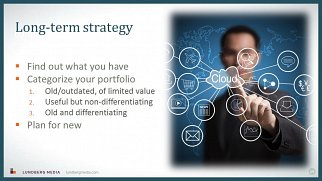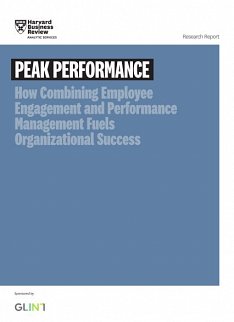tagged with: Cloud computing
Blog Post

It is becoming increasingly common to hear CIOs say that any new applications their enterprises adopt should be cloud-based, with SaaS as the first option (will an existing service fill your needs?), and with custom-developed applications written to be cloud native. But what about the many legacy systems already running in your organization? After you've done an initial triage (see my previous post), large enterprises are left with significant portfolios of important and value-adding systems. According to a Computerworld interview with Stephen Orban, head of enterprise strategy at Amazon Web Services (AWS), "now that major enterprises have gotten their feet wet with smaller cloud projects, they're beginning to focus on migrating large, critical legacy workloads."
So here's my take on how to approach this.
Blog Post

Organizations often fall into new technologies haphazardly. Different groups discover new ways of working that better meet their needs, and they go for it. Eventually, CIOs find themselves with something of a jumble to manage.
Cloud is a particularly extreme example of this, as cloud services can be quite easy to sign onto. There are certainly categories of cloud services that CIOs don't need to control -- things that are opportunistic, department-specific and that don't need to link into core systems or data. As long as the acquiring business people understand and abide by some basic guidelines (mainly having to do with security), let a thousand flowers bloom.
However, when an organization starts to look to cloud for its enterprise IT needs, that's a very different story.
Blog Post

Software-defined everything is a hot topic these days -- first and foremost because the pace of change in business is accelerating, and this is changing expectations for how IT operates. I've been hosting a lot of CIO roundtables and dinners on this topic, and I hear a growing consensus that if IT organizations don't figure out how to compete with nimble cloud providers to provide IT services on-demand, they will be outsourced. "IT has to virtualize and automate or die," one IT leader said.
While many CIOs see a "service broker" role in their future, a VP of IT from a global technology manufacturer actually predicts the dissolution of IT altogether. He believes that all of the functions that are part of IT today will be pushed out into engineering, or product development, and all that will remain in IT is governance. A year ago, that statement would have been immediately shot down. Not today ...
Blog Post

I just had my first highlights reel made and I'm pretty excited. I delivered the opening keynote at the Oracle Cloud World conference in Boston in December 2014. Oracle did a great job filming it in the first place, and my friend the very talented videographer Craig Kimberley at Skyprop Media did a great job editing it down to a couple of minutes. This shows both my onstage work and the kinds of (very visual) slides that I create. I hope you like it!
Blog Post

The New Polymath, by Vinnie Mirchandani, is an ambitious, wide-ranging and celebratory exploration of technology innovation in the 21st century. The book epitomizes the title (a polymath is someone who excels in many disciplines) in taking on the distinct, though certainly overlapping, disciplines of infotech, cleantech and healthtech – and all the various technologies and practices that support them. It evokes the spirit of polymaths throughout history (Sir Isaac Newton, Benjamin Franklin, Hypatia of Alexandria, and the ultimate polymath, Leonardo da Vinci) and seeks their equivalents in our own times in both individuals (Bill Joy, Nathan Myhrvold) and organizations. Most provocative, it sets up a parallel between our age and the 14th century, when the Late Middle Ages, or Dark Ages, gave way to the Renaissance, or rebirth. Mirchandani is hopeful that we are entering another Renaissance.
Blog Post

This is Part Two of my interview with Todd Pierce, CIO of Genentech. In Part One, we spoke about effective communication.
Blog Post
The holy grail of post-recession business will be profitable growth. The very idea of profitable growth is full of contradiction, as growth generally requires investment. With revenues unlikely to outpace that investment in what economists are predicting will be an anemic, drawn-out recovery, companies that have already been doing a lot of cost cutting will have to become even more efficient. This will put unusual pressure on executives to place the right bets when it comes to investments (based on strong customer insight and market knowledge). And it will require excellent management abilities and flexible, responsive, lower-cost IT.
Blog Post
Government agencies are in fiscal trauma right now. Billions of dollars over budget, many states are taking drastic measures to cut costs. Federal CIO Vivek Kundra and CTO Aneesh Chopra are aggressively pursuing software as a service and cloud computing as one way to cut costs, and the state of Utah is planning a private cloud to serve local agencies.
Blog Post
The paradox of tough times is they usually call for dramatic measures, yet it's human nature to keep a low profile and avoid risk, both corporate and personal. This is the dilemma facing CIOs today.
As I wrote in a column a few months ago, incrementalism won't cut it for many businesses in this economy. But according to Paul Gaffney, former CIO and head of supply chain at Staples and current COO of Desktone, that's the path most CIOs will take.




